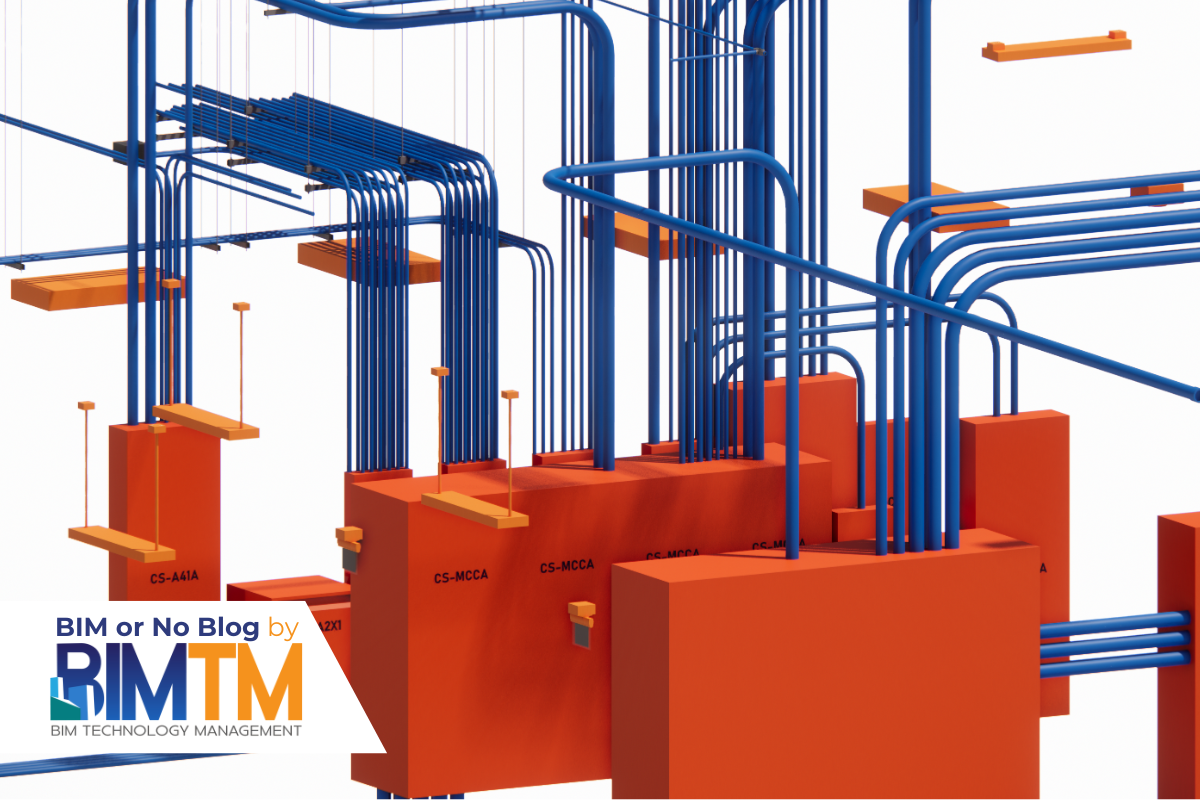Ah, electrical coordination. That magical phase where your patience goes to die and your conduit gets yeeted across the ceiling because surprise, a duct just claimed squatters’ rights on your route.
But believe it or not, there are things that make this circus slightly less chaotic, and no, they don’t involve sacrificing a small animal to the coordination gods. Here are five real-world, time-saving electrical BIM coordination tips that every electrical coordinator should keep in their toolbelt.
-
Waiting for Duct and Sloped Pipe to Stop Doing the Cha-Cha
Look, we get it. You want to get in, get modeled, and get out But sometimes the smartest thing you can do… is less. 19 overhead feeders are not easy to coordinate around everything later. Having a ‘worst case scenario zone’ and a conversation early on about space needs with duct and sloped pipe provides an opportunity to add the fine details later. You’ll save yourself hours of rework and probably avoid a rage-quit or two while you’re at it.
💡 Pro Tip: Don’t model like it’s a 50-meter sprint… the M and P trades do their thing first.
-
Actually Talking to the Field Team (Yes, Before Things Go Awry)
It sounds simple, but field communication is wildly underrated. Leverage the expertise of the field before you model that beautiful conduit drop. There is a good chance they have seen a situation like this before, and the field teams know what’s actually buildable. They’ll call BS on your ceiling space dreams real quick.
🛠️ Field wisdom > model fantasy. Every. D*mn. Time.
-
Keeping the BIM Coordination Team in the Loop (Not Just When Stuff Breaks)
If you’re only talking to the coordination team when you’re about to lose it, you’re doing it wrong. You’re in this TOGETHER from start to finish, and regular check-ins save you from surprise design changes, rogue system moves, and those awkward “wait, you moved what?” moments. Coordination isn’t a solo sport. Use the team.
🤝 Coordination team communication = less chaos and fewer late-night rage-scrolls through Navisworks.
-
Double-Check the LOD Expectations (Because Modeling Everything is a Trap)
LOD expectations aren’t just buzzwords in a scope doc. They tell you how far to go and when to stop. Overmodeling burns time, slows your file, and eats away at your soul. Undermodeling gets you flagged in clash review. So just verify the proper LOD scope required by the client, and everyone’s happy.
📏 Know the deliverable. Model to that deliverable. Then walk away.
-
Use Viewpoints in Navisworks Like It’s Your Digital Brain
Viewpoints = receipts. Set them up early and often to track promises, mark pending moves, and document that time Duct swore they’d shift their 3″ main north (and maybe “forgot” to follow through…) It’s like a digital sticky note, except your whole team can see it and no one spills coffee on it.
📌 Bonus: You can make viewpoints passive-aggressive and helpful. Win-win.
The TL;DR?
Coordination is part technical, part tactical, and 100% communication. If you’re skipping the talking and hoping Revit magically works itself out, you’re gonna have a pretty bad time. But with a little patience, some solid conversations, and smart tools like Navisworks viewpoints, you can actually get through coordination without losing your will to model.
These electrical BIM coordination tips aren’t magic. They’re just what works in the real world. Use them early, use them often, and maybe you’ll even get to finish your next project without duct ghosting you again.
Need help getting your electrical modeling team aligned with BIM best practices?
You could keep guessing your way through coordination… or you could talk to the brilliant, slightly sarcastic minds who wrote this blog instead. We’ve seen some things. We’ve fixed worse. And we don’t gatekeep good BIM strategy.
Also, if you want tools that actually support all of this, check out EVOLVE Electrical. Our partners at EVOLVE MEP are building features that make coordination smoother, modeling faster, and your sanity slightly more intact.
Better tools. Better coordination. Less crying in Navisworks. Everybody wins.
And check out our other blogs HERE.
The mastermind behind the tips?
— Tawney Vaughan, Electrical BIM Manager at BIMTM

